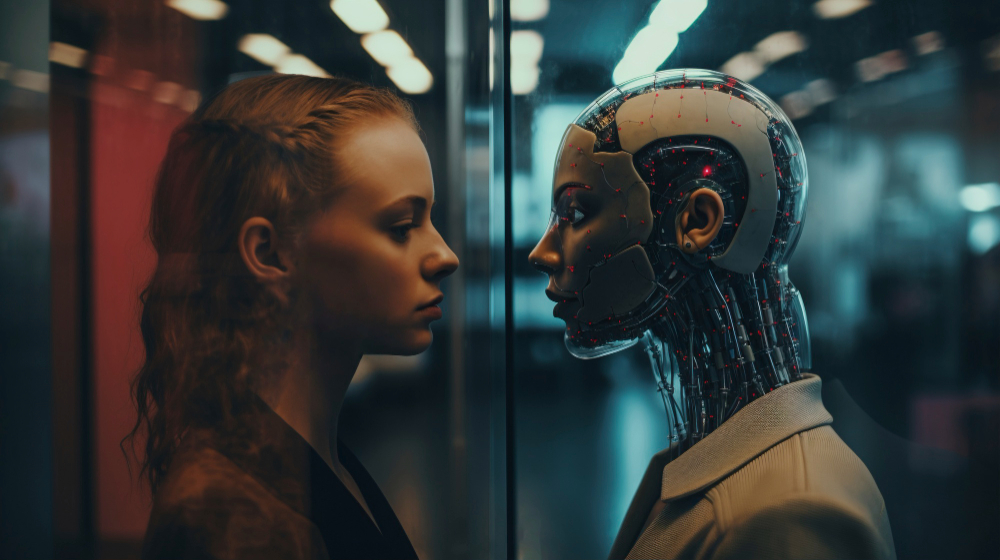
Are you a designer looking to take your creativity to the next level? Look no further than AI image generators, the revolutionary technology that is shaping the future of design. With AI image generators, you can unleash your imagination like never before, effortlessly transforming your ideas into stunning visuals.
Using sophisticated algorithms, AI image generators can analyze existing images and create new ones based on your input. This means that even if you're not an expert in graphic design, you can still create professional-quality visuals that will capture your audience's attention.
Whether you're working on a website, social media campaign, or print materials, AI image generators can help you streamline your design process and save valuable time. By automating certain tasks, you can focus on the creative aspects of your work and produce unique designs that stand out from the crowd.
Embrace the future of design and discover the limitless possibilities of AI image generators. Unleash your creativity, bring your ideas to life, and take your design skills to new heights.
AI image generators are powered by complex algorithms that enable them to analyze and understand existing images. These algorithms are trained on vast amounts of visual data, allowing the AI to learn patterns, styles, and elements that make up various types of images.
When you input your creative ideas into an AI image generator, it uses its trained knowledge to generate new images that align with your vision. The generator can manipulate elements like color, composition, texture, and style to create unique visuals that match your requirements.
With AI image generators, you have control over the level of customization. You can provide specific instructions, such as choosing a color palette or incorporating certain shapes, and the AI will generate images accordingly. This flexibility allows designers to experiment and iterate quickly, exploring different possibilities without the need for extensive manual work.
AI image generators can also be trained on specific image datasets, such as photographs, paintings, or illustrations, enabling them to mimic the style and characteristics of those images. This opens up a world of possibilities for designers, as they can create visuals in various artistic styles, from classic to modern, with just a few clicks.
The use of AI image generators in design offers several significant benefits. First and foremost, it saves time. Designers no longer need to spend hours manually creating or searching for suitable images. With AI image generators, the process becomes highly efficient, allowing designers to focus on other crucial aspects of their work.
Additionally, AI image generators provide a level of consistency in design. By using the same algorithm, designers can ensure that their visuals have a cohesive look and feel, even if they are working on different projects. This consistency can help establish brand identity and create a memorable experience for the audience.
Another advantage of AI image generators is the ability to generate unique visuals that stand out. With traditional stock images, there is always a risk of using the same visuals as others. AI image generators empower designers to create one-of-a-kind visuals that align perfectly with their creative vision, ensuring that their work is original and distinctive.
Furthermore, AI image generators can bridge the gap for designers who may not have extensive graphic design skills. These tools democratize the design process, making it accessible to a wider audience. Designers can now create professional-quality visuals without the need for advanced technical knowledge, expanding the boundaries of creativity.
There are several AI image generator tools available in the market that cater to different design needs. Each tool has its unique features and capabilities, allowing designers to find the one that best suits their requirements. Here are a few popular examples:
1. DeepArt.io: DeepArt.io allows designers to transform their photos into artworks inspired by famous artists or artistic styles. By leveraging AI algorithms, DeepArt.io creates stunning visual interpretations that mimic the style of renowned painters.
2. RunwayML: RunwayML is a versatile tool that enables designers to generate visuals in various domains, including graphic design, fashion, and illustration. With its intuitive interface, designers can experiment with different AI models and create visuals that push the boundaries of traditional design.
3. GAN Paint Studio: GAN Paint Studio is an AI image generator that allows designers to modify and enhance existing images. With its intuitive user interface, designers can easily manipulate elements like color, texture, and shape, transforming ordinary images into extraordinary works of art.
4. ArtBreeder: ArtBreeder is a collaborative AI image generator that enables designers to blend and cross-pollinate different images to create unique visuals. By combining the traits of multiple images, designers can produce stunning visuals that are entirely original and captivating.
These are just a few examples of the vast array of AI image generator tools available. Each tool offers unique features and capabilities, allowing designers to explore and experiment with different creative possibilities.
To fully leverage the power of AI image generators, it's essential to integrate them seamlessly into your design process. Here are some steps to consider:
1. Define your creative vision: Before using an AI image generator, clearly define your creative vision. Consider the style, mood, and elements you want to incorporate into your design. This will help guide the AI image generator to generate visuals that align with your goals.
2. Choose the right tool: Select an AI image generator tool that aligns with your design requirements. Consider factors such as the type of visuals you want to create, the level of customization you need, and the specific features offered by the tool.
3. Provide specific instructions: To ensure the AI image generator produces the desired output, provide clear and specific instructions. This may include selecting a color palette, specifying the composition, or requesting specific elements to be included in the image.
4. Iterate and refine: AI image generators allow you to experiment and iterate quickly. Don't be afraid to explore different possibilities and refine your designs. Use the generated images as starting points and make necessary adjustments to achieve your desired outcome.
5. Combine AI-generated visuals with manual design: While AI image generators can automate certain tasks, it's important to remember that they are tools to enhance your creativity, not replace it entirely. Combine AI-generated visuals with your own design skills to create unique and compelling visuals.
By following these steps, you can seamlessly integrate AI image generators into your design process and unlock their full potential.
While AI image generators offer exciting possibilities, they also have limitations that designers should be aware of. One limitation is the lack of context and understanding. AI image generators analyze images based on patterns and data but may not fully comprehend the meaning or context behind the visuals. This can result in generated images that may not accurately represent the intended message or concept.
Additionally, AI image generators may struggle with producing highly complex or abstract visuals. While they excel at generating realistic images or mimicking specific styles, they may struggle when confronted with complex or unconventional design requirements.
Furthermore, AI image generators are only as good as the training data they have been exposed to. If the training data is limited or biased, the generated images may also reflect those limitations or biases. Designers must be mindful of this and consider the ethical implications of using AI image generators.
It's important to remember that AI image generators are tools to augment creativity, not replace it entirely. Designers should use their expertise and judgment to refine and enhance the generated images to achieve their desired outcomes.
As with any technology, there are ethical considerations when using AI image generators. Designers must be aware of the potential biases that may be present in the training data used by AI algorithms. If the training data is not diverse or representative, the generated images may perpetuate stereotypes or reinforce societal biases.
Designers should also consider the implications of using AI-generated visuals in sensitive or controversial contexts. AI image generators can produce highly realistic images, including those that resemble real people. It is crucial to ensure that the generated visuals are used ethically and responsibly, respecting individuals' rights and privacy.
Additionally, designers should be transparent about the use of AI image generators in their work. If AI-generated visuals are used in marketing or advertising materials, it's essential to disclose that they were created with the help of AI technology. Transparency builds trust with the audience and ensures ethical practices in design.
By being mindful of these ethical considerations, designers can use AI image generators responsibly and contribute to a more inclusive and diverse design landscape.
The future of design is undoubtedly intertwined with AI image generators. As technology continues to advance, AI algorithms will become more sophisticated, enabling designers to create even more unique and compelling visuals. The possibilities are endless, from generating interactive designs to creating personalized visuals tailored to individual preferences.
AI image generators will also play a significant role in enhancing collaboration among designers. With collaborative AI tools, designers can work together in real-time, blending their creative visions and pushing the boundaries of design further.
Furthermore, as AI image generators become more accessible and user-friendly, they will empower individuals from diverse backgrounds to explore and express their creativity. Design will no longer be limited to those with extensive graphic design skills, but will become a tool for self-expression and innovation.
The future of design with AI image generators is exciting and full of potential. By embracing this technology, designers can revolutionize the way they work, unlocking new levels of creativity and producing designs that captivate and inspire.
If you're interested in exploring AI image generators further, here are some resources to get you started:
1. Online tutorials and courses: Many online platforms offer tutorials and courses on AI image generators and their applications in design. Websites such as Coursera, Udemy, and LinkedIn Learning provide comprehensive courses that cover various aspects of AI image generation.
2. Research papers and publications: Stay updated with the latest advancements in AI image generation by exploring research papers and publications. Websites like arXiv and Google Scholar are excellent resources for finding academic papers on the subject.
3. Online communities and forums: Engage with other designers and AI enthusiasts in online communities and forums dedicated to AI image generation. Platforms such as Reddit and Stack Exchange have active communities where you can ask questions, share insights, and learn from others' experiences.
4. Webinars and conferences: Attend webinars and conferences focused on AI and design. These events often feature experts in the field who share their knowledge and insights into AI image generation.
By exploring these resources, you can deepen your understanding of AI image generators and stay at the forefront of this rapidly evolving field.
